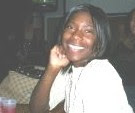In our hands is where we frame the context our our lives and our existence. It is in the natural curves and shape of our hands that we mold not only our lives, but also the food we eat, the clothes we wear, and so on, and so forth. Our hands themselves are framed, thus everything we are, touch, see, hear, and sense is essentially framed by something else.
The bubble we live in is relative to how we perceive it. This makes our senses more important, because the hands referred to in this piece works metaphorically. How ever the interpreter perceives the world becomes the frame for which they interpret the world. For instance, let's take into account the perception of someone with an amputated arm. Though the content is the same, it maybe interpreted differently by someone with a disability. Frame takes on a whole new bubble than that of someone who seems perfectly normal (whatever that is).
After careful consideration, I have composed a short video accompanied by a poem by Raymond A. Foss. I have entitled it the hands project.

1 comment:
This is just beautiful.
Your hands in typing hve shaped something that can feed the spirit
which is just isn't adequately nourished vicariously off sight, sound, smell, texture
but stimulation from the combined effect of these perceptual tools? An effect rounded from these elements being attracted to each other, and toward the center, producing roundness, spheres,
long held as elegant, perfect forms.
Most precipitation takes on the sphere, rain, most hail,
but back to rain, bubbles, the appealing transparency, crystal balls in which we see ongoing interactions so have ideas about where such interactions can be going, we can see prior interactions who consequences we experience as we continue interacting
so this form does well to be honored
even so, I wonder about the more varied form of snowflakes, crystals of water, the perfection there quite different from that of water that arrives as rain drops, bubbles;
the structure of the water crystal, the snowflake so revealing of the interactions in the snowflake's journey, the particulars of which provide the distinctive structure, distinctive identity of each flake, variations in experience, subtle differences and those more profound --really no two alike? I don't know, but many similarities --so snowflakes somehow identical, one in Tucumcari, one in Waterloo perhaps are not identical if one is in Tucumcai and one is in Waterloo.
And the way the flake is so open, not as attracted toward its own center so as to close and become more compact and practical in the sphericality
--more excess here, beauty particularly fragile, so sensitive to temperature, so likely to melt --even if in polar regions thee days.
Snow crystals are related to drops of water, to spherical eater; a frozen form that emerges under certain conditions, in a range of structural manifestations.
Here's a little from About.com:Chemistry
Generally, snowflakes are six-sided hexagonal crystals are shaped in high clouds; needles or flat six-sided crystals are shaped in middle height clouds; and a wide variety of six-sided shapes are formed in low clouds. Colder temperatures produce snowflakes with sharper tips on the sides of the crystals and may lead to branching of the snowflake arms (dendrites). Snowflakes that grow under warmer conditions grow more slowly, resulting in smoother, less intricate shapes.
32-25° F - Thin hexagonal plates
25-21° F - Needles
21-14° F - Hollow columns
14-10° F - Sector plates (hexagons with indentations)
10-3° F - Dendrites (lacy hexagonal shapes)
--The snowflake as a kind of feathered bubble if you will.
The video is beautiful also --you've adorned your work with attributes of a beautiful spirit.
Post a Comment